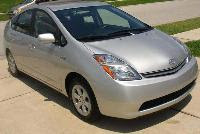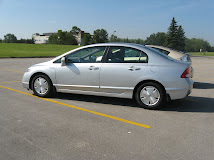After looking at the boxes for several days I decided I would give

the installation a shot. Each box arrived with a different set of tail lights. I picked a set and opted to get my hands dirty with the task of prepping the car for the tail light replacement. This also meant securing an old blanket where I could temporarily rest the bumper and the taillights while working on the car.
The following is a brief summary of the major steps taken during this retrofit. A good set of tools is a must to avoid damaging the new and the OEM parts.
- If you have rear mudflaps you may have to remove them. To do this well you may also need to remove the rear wheels since we may not have enough clearance to remove the flaps.

- Then you have to remove a total of 4 screws on each side of the rear wheel well that are holding the bumper in place. Take care to note which screws go where in order to reverse the procedure later on - yes they are all slightly different.
- Then it is a matter on unbolting two high mounted screws (under the trunk lid) with a hex key and then carefully pop off the two clips at the bottom of the bumper.
- Once this hardware is out of the way and with the help of an assistant we pull out the bumper starting from the ends at each wheel well. An assistant will help hold the lightweight bumper without it falling on the ground - remember the bumper is a painted surface.
- The next step is to remove the trunk lining out of the way enough to gain access to each tail light. Remove the connectors and bulb from each taillight and take note which bulb came from which orifice.
- You need a good wrench to remove a total of 4 nuts out of each taillight.
 Once the nuts are removed we need to loosen up the metal bracket holding up each tail light. The single screw attaching the metal bracket to the bottom of the tail light also needs to come off completely. We do this to both taillights and gently remove the units.
Once the nuts are removed we need to loosen up the metal bracket holding up each tail light. The single screw attaching the metal bracket to the bottom of the tail light also needs to come off completely. We do this to both taillights and gently remove the units. - At this stage you are ready to unpack then new tail lights and slide them into the appropriate locations.
- Perform a readiness test before bolting everything back in. This may include pressing the brake pedal, turning on the marker lights and the hazard lights. If all looks good simply bolt everything back to the way it was. Make sure the water seal is properly positioned around the inner edge of the taillights otherwise you may end-up with some water in your trunk after a car wash.

The picture to the right shows the OEM and the new LED tail lights for the rear right side of the car. The top light is the OEM part and the bottom (with the attached load resistor) is the new assembly.
Some words of caution...Make sure that you insert the new taillight connectors into the OEM wiring harness carefully since these are not as smooth and rounded as the OEM bulbs were and you may crumple the internal contacts in the OEM harness.
Also, as you may notice one of the new tail lights has a bad LED. I will be exchanging this one one of these days.
Was it worth it?
That's what I will be assessing over the next few days. At some point the full review of this accessory will be posted at www.CleanMPG.com. Anyway, the whole setup took about two hours to complete especially after you include the inner (trunk lid mounted) tail lights.
Here's a little video showing the tail lights in action. The side marker lights are on as well as the hazards.
 our hypermiling buck?
our hypermiling buck?









